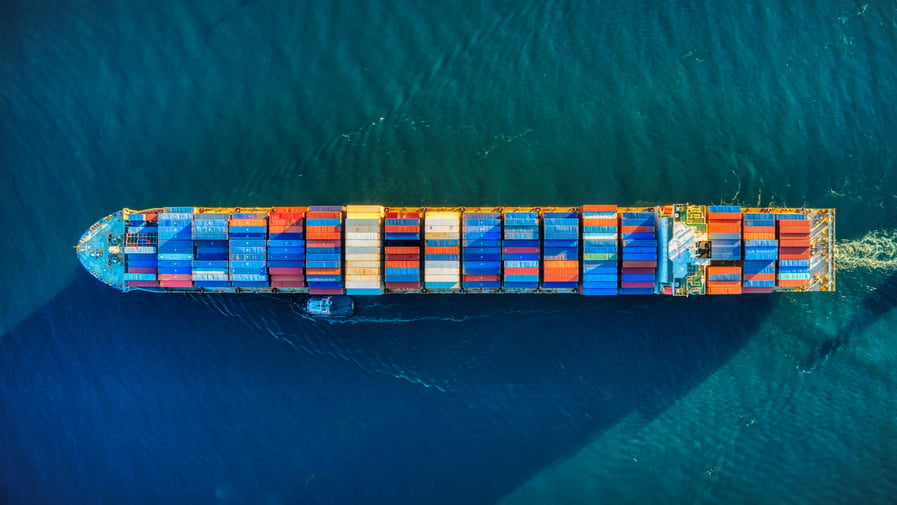In this article Natalie Stafford, Head of ESG and Sustainability, and Gabrielle Reid, Associate Director, Strategic Intelligence, examine why sustainability programmes cannot be built without factoring in geopolitical uncertainty.
Since November last year, the Yemen-based Houthis have conducted several attacks against merchant and military vessels transiting the Bab el-Mandeb Strait as part of a claimed protest against the ongoing Israeli offensive in Gaza amid the Israel-Palestine conflict. Though at first, the Houthis claimed that the attacks targeted Israeli-linked vessels, that profile has since widened with attacks becoming increasingly indiscriminate. Shipping majors have since suspended operations in the Red Sea, many instead choosing to transit the Cape of Good Hope, in response to both safety concerns and war risk premium considerations. While the ramifications of this are manifold, the success that the Houthis have enjoyed in disrupting global trade flows serves as a telling example of the headwinds that sustainability programmes face in today’s increasingly uncertain world.
The Israel-Palestine conflict has resulted in a fundamental shift in the Middle East region that extends beyond Gaza. Just looking at the impact on the Houthi group in the first instance, the success of these attacks has elevated the Iran-backed group among the various regional militias that are hostile to the US and Israel, including the likes of Hezbollah and militias in Syria and Iraq. And, while no doubt Iran supports the Houthi campaign, the Houthi success has also amplified its potential to operate outside of direct Iranian control. At the same time, their ties with Iran continue to deter nation states like the US and Israel from decisively responding to the Houthi agitation that would run the risk of an aggravated Iran prompting a regional escalation most stakeholders are eager to avoid.
Even in the event of a ceasefire in Gaza, the Houthis have demonstrated the vulnerability of the Bab el-Mandeb Straitˮ
This dynamic of the rise of the Houthis has consequences for how closely the crisis in the Red Sea is actually tied to developments in Gaza. And, the longer the crisis continues the less likely a resolution on one front will necessitate a solution on the other. While the attacks have been largely motivated by the ongoing Israel-Palestine conflict, the targeting of merchant vessels by the Houthis and the associated disruptions to international trade have helped the Houthis win broader credibility in Yemen and likely have increased leverage in any future peace talks in the country. Thus, even in the event of a ceasefire in Gaza, the Houthis have demonstrated the vulnerability of the Bab el-Mandeb Strait as part of the Red Sea maritime artery and have shown their control over it. This geographical vulnerability is a critical red flag for global shipping companies and multinationals reliant on single shipping routes within their supply chains and the impacts of simply rerouting ships can be widespread, not least for sustainability programmes.
A ripple effect
Emissions are probably the most obvious impact on the shipping industry’s sustainability progress, particularly in the context of the International Maritime Organization (IMO)’s stated goals of reaching net zero greenhouse gas emissions by 2050 and reducing emissions by at least 20 percent by 2030 – that’s less than six years away. Rerouting vessels around the Cape of Good Hope increases both the carbon footprint of the shipping industry as a whole and for individual companies. Even if this is only a temporary measure in response to concerns in the Middle East - though most indicators suggest this may not be the case – it presents some immediate concerns in terms of meeting sustainability objectives.
Some estimates say the rerouting can add up to USD 1 million in fuel expenses for every round trip between Asia and Europe, and this is alongside higher insurance and labour costs. These increased costs aside, the increased fuel use will impact emission targets, which in the extreme, can result in financial sanctions. Since the start of 2024, the EU Emissions Trading System (ETS) has included maritime emissions for vessels calling at EU ports, essentially putting a cap on carbon emissions. Longer routes with greater fuel consumption will result in higher levies for vessels calling at European ports. Ultimately there is no way round this, and the cap will be getting progressively lower as the years go on. The advent of the ETS has already been hastening a broad shift to the development and use of greener fuels and technologies and the sharing of investment in infrastructure for alternative fuels. But the increased costs being borne by companies to reroute around the Cape of Good Hope may, at least in the short term, actually slow the industry’s transition to greener fuels overall. The path to sustainability is often not a cheap one and, when margins are being squeezed in all directions, some shipping companies may think it more expedient to jettison or at least delay their sustainability goals, in the near term.
For those vessels using alternative fuel options, a significant re-routing also poses additional complexities. There may be limitations in distance, route availability and refuelling infrastructure, which could remove the use of alternative fuels as a viable option i.e. potentially sending progress on this sustainability objective backwards in the short term.
Extending a journey has impacts on the application of labour, with crews required to increase the time spent on board, which may have implications for labour rights, safety, and access to supplies.ˮ
There are other implications in terms of the practical challenges around rerouting journeys. Extending a journey has impacts on the application of labour, with crews required to increase the time spent on board, which may have implications for labour rights, safety, and access to supplies. The safety and wellbeing of seafarers should not be compromised, and all mechanisms to ensure this should be a priority. Rerouting around the Cape of Good Hope may result in forced contract extensions for some seafarers. Protections should be afforded to all crew to ensure access to fair and reasonable working conditions, that all possible measures have been employed to ensure their safety, that workers are adequately compensated for work that assumes a level of risk, and that they have access to communications channels to voice their concerns about their rights as workers, their safety or compensation, without fear of retribution. Shipowners and operators have human rights responsibilities to their crew and, particularly with the growing amount of regulation around human rights in supply chains, the cargo owners and distributors will be asking more questions of the activities and safeguards present within their value chains.
On the record
Any change to the carbon footprint, particularly in this case being larger and longer, needs to be accounted for in annual reporting. Data collection, which can be a laborious process at best, is going to be more onerous. Re-routing may mean new information is needed and you may need to work with new third parties – including new port authorities - to gather it. Technology can be a real help here and you will need to have a good Scope 3 emissions calculator that is able to adapt to changing routes and inputs. Some firms will have calculated their prospective emissions footprint for future years based on their journeys before the crisis, and built KPIs and targets around this, which they will be unable to meet. And, if your organisation forms part of someone else’s supply chain, you too could be faced with their increased reporting requirements. Having a clear long-term plan for how you are going to bring these emissions back down, and communicating it, even out of the usual reporting cycle, will be important to both those companies within the value or supply chain, and ultimately to your own shareholders.
A need for longer term planning
The situation in the Red Sea remains highly fluid and its impact on global trade and trade relations remains clear, not least in the event of further escalation. Overall, the impact will become more severe the longer tensions in the Middle East last. Accordingly, it is just not practical to say that emissions reduction targets will have to be put on hold. Rather, the cost of carbon will need to be integrated into financial and risk management plans going forwards, budgeting for emissions allowance, considering options of insetting as well as offsetting, and building enough flexibility into the system that it can withstand geopolitical shocks like this, alongside communicating all of this to other parts of the value or supply chain, and to shareholders.
Shipping already contributes around three percent of the world’s greenhouse gas emissions. It will not be acceptable in the court of public opinion and shareholders, for this to increase no matter what the geopolitical shock. The industry needs to show that it can either keep its sustainability targets on track now, or, if it can’t, that is has a plan to get to in the near future. This may mean accelerating other aspects of your decarbonization plans and it definitely means communicating your plans to stakeholders. And most importantly, geopolitical issues and the potential shock they can cause, must be factored into any corporate or industry decision-making about sustainability strategies, reporting and prioritisation.






